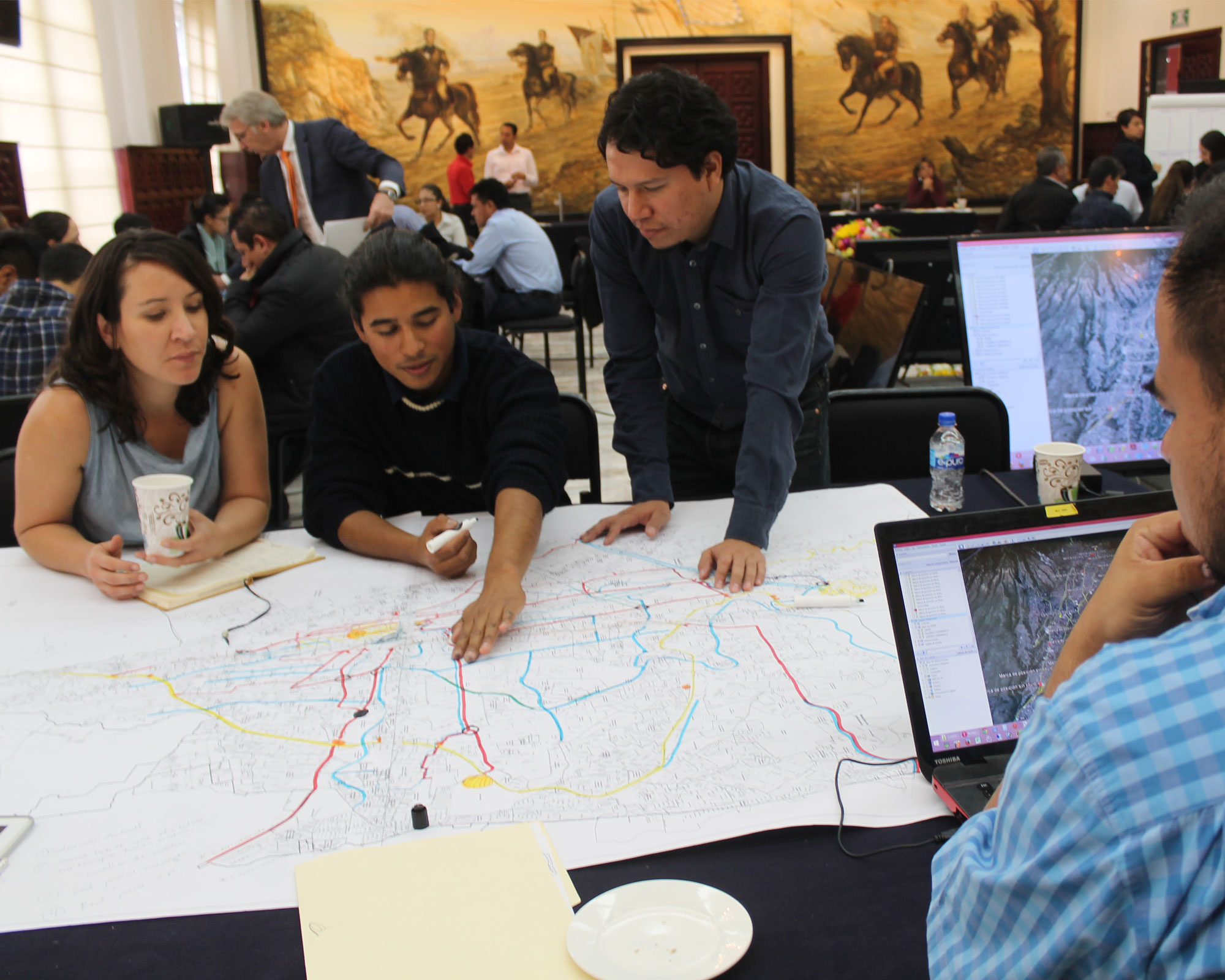
Projects
ECOZONA Cuernavaca – Urban and transport transformation in the historic centre of Cuernavaca, Mexico
Morelos Government contracted MOVE Mobility to consult on the solutions for an accessible and sustainable historic centre of Cuernavaca.
Year
2015
Location
Mexico, Cuernavaca
Status
finalised in 2017
Client
Gobierno de Morelos
Team
Morelos State in cooperation with the Federal Government and several civil and environmental organisations started the first ECOZONA, which is intended to transform the historic centre of Cuernavaca. The aim is to stop the un-organised growth and urban sprawl towards the hills and valleys, therefore preventing further environmental damages, such as the deforestation, water and air pollution. Based on these goals, the Morelos Government contracted MOVE Mobility to consult on the solutions for an accessible and sustainable city centre.
Stage 1 – Mobility workshop
The objective of this workshop was to assist and advice the City of Cuernavaca and their planners. MOVE Mobility worked with different stakeholders: the municipality, architects and civil society representatives from the region. The workshop focused on the envisioning of a strategic network for Cuernavaca, from the Metropolitan area to the Historical Centre scale.
Stage 2 – Mobility strategy development and evaluation
As a result of the workshop, MOVE Mobility continued working on the reorganisation of the public transport, car and bike flows in the surrounding of the ECOZONA. In order to achieve the main goals of the ECOZONA, the Municipality of Morelos developed a mobility strategy which included different proposals for changing its transport system towards a more sustainable one. For this project, MOVE Mobility was responsible for evaluating the different proposals in the MOVE Meter and for studying the impacts of these ideas on the rest of the traffic in the ECOZONA and Cuernavaca. Among the scenarios evaluated were the pedestrianisation of the current city centre, the implementation of circular routes in the area and the effects of the BRT system in the city and its surrounding towns. The results were presented in a final workshop.

